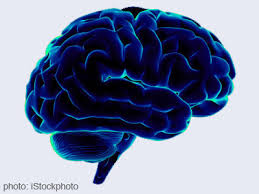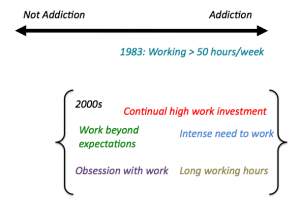Workaholism
“The Best Dressed Mental Health Problem”
DEFINITIONS
In 1971, Dr. Wayne Oates coined the term workaholism and defined it as “addiction to work, the compulsive and uncontrollable need to work incessantly.” While the term is used often in everyday language, there is no consensus or accepted definition. The graphic on the right shows a few of the constructs published in research over the years.
The change in definition over time reveals how workaholism is linked to social expectations. The definition from 1983 now seems absurd in the United States as most of America’s workforce today works for 47 hours per week.
QUIZ: WHAT TV CAST DESCRIBES YOUR WORK-LIFE BALANCE?
DSM CHARACTERISTICS
Based on addiction’s DSM characteristics, however, workaholism fits the criteria for the following reasons:
- Work induces a feeling of pleasure
- Preoccupation with work affects social life
- Periods of satiation by working
- Loss of control leading to negative consequences
- Burn out
- Ruining relationships with peers or significant others
- Preoccupation with working
- Lack of sleep
- Denial that one has a problem
NEUROLOGICAL UNDERPINNINGS
 While there is currently a lack of neuroscience research on this topic, speculation has been made about how workaholism relates to the typical neurological pathways that exist in addictions.
While there is currently a lack of neuroscience research on this topic, speculation has been made about how workaholism relates to the typical neurological pathways that exist in addictions.
- Reward Pathway
- Workaholics feel a sense of accomplishment or receive external rewards (increased salary, bonus, praise, etc.) as a result of their behavior
- Loss of Uncomfortable Feeling
- Working tames the feeling of anxiety, guilt, or fear
CITATIONS AND MORE INFORMATION
Workaholism: An Overview and Current Status of Research (2013)



